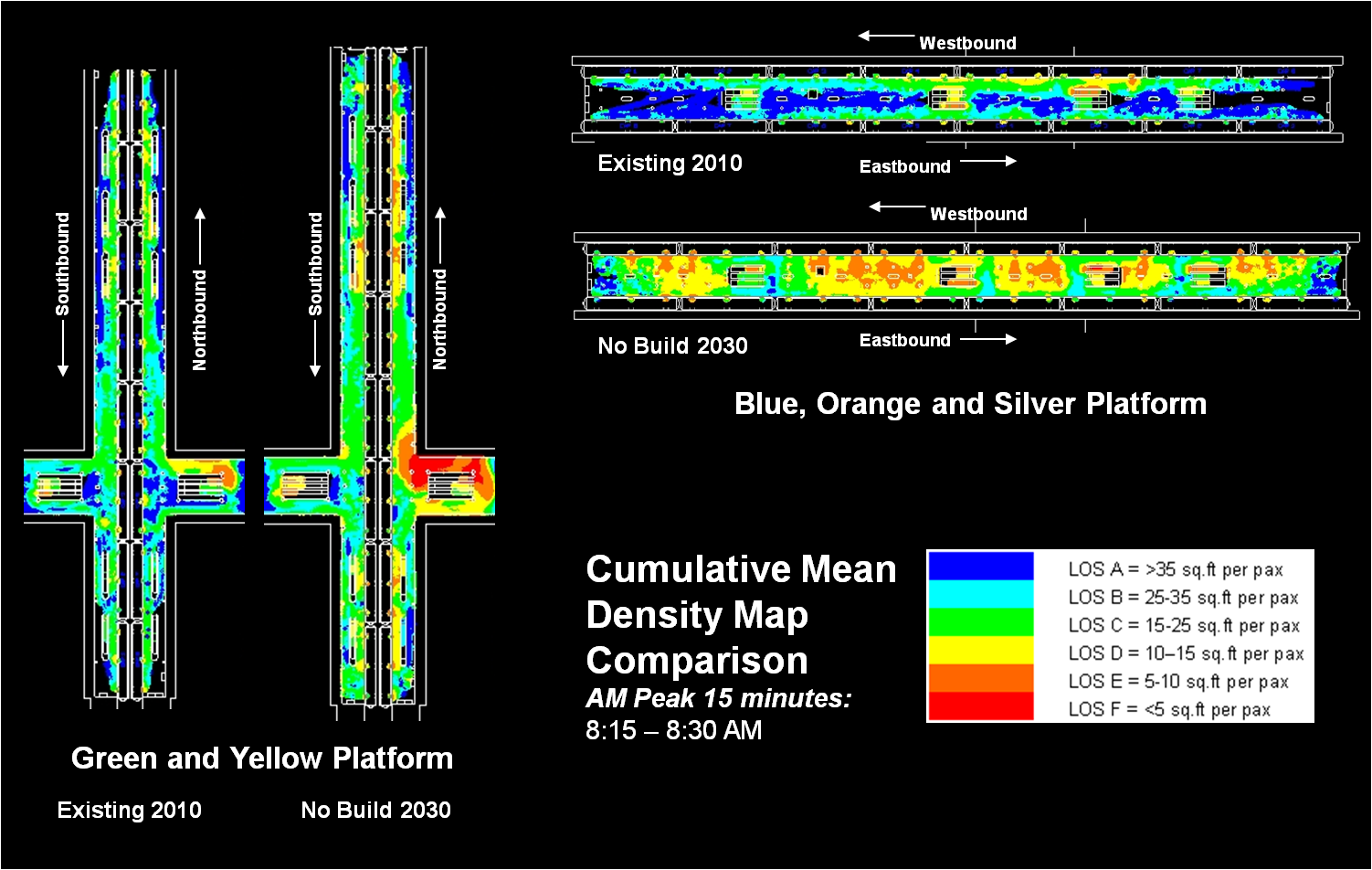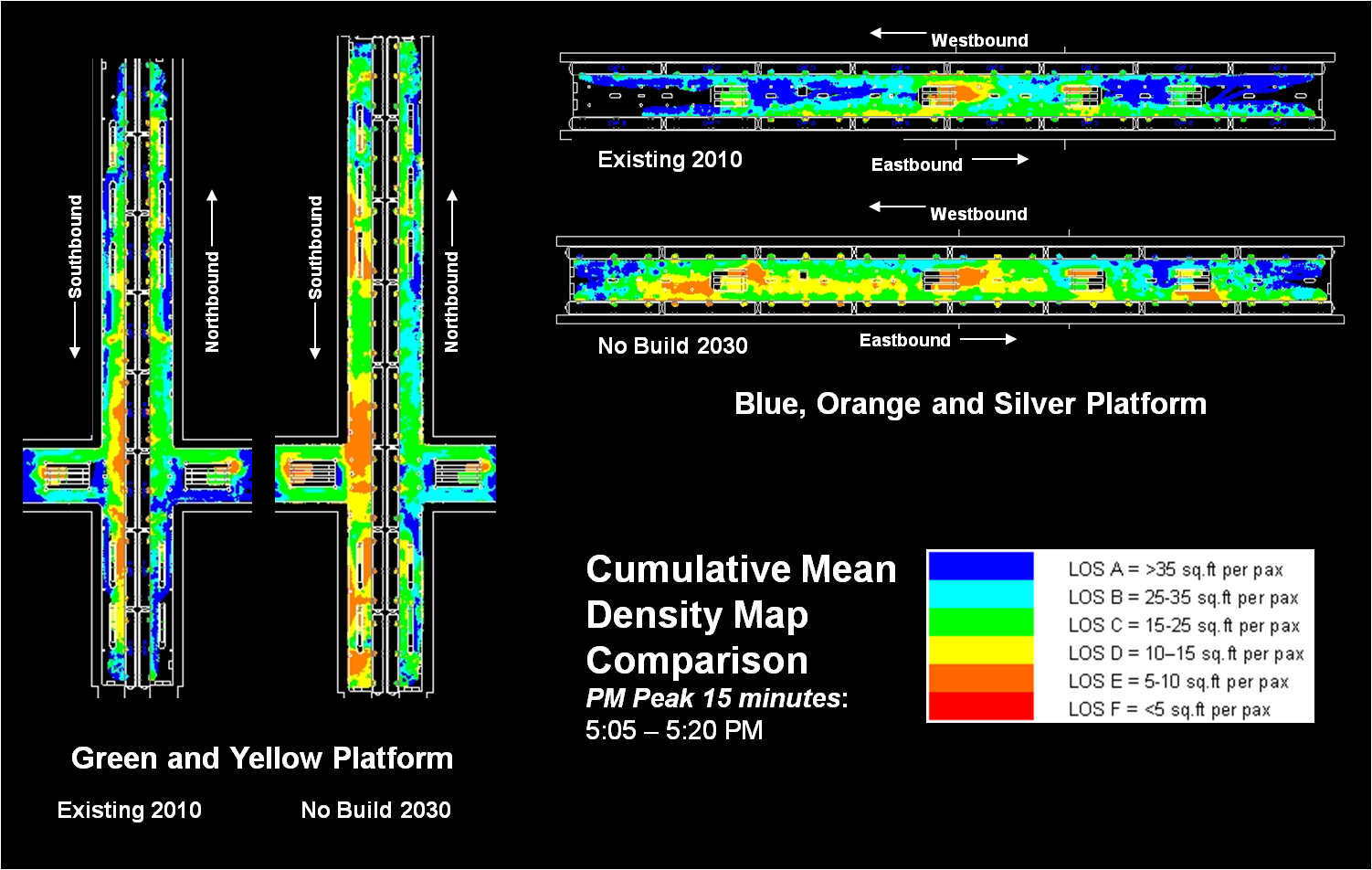L’Enfant Plaza Station Capacity Improvements Study
The L’Enfant Plaza Station is one of busiest stations in the Metrorail system and handles thousands of passenger transfers on four of the five Metrorail lines. It ranks third among all stations in absolute ridership growth over the last five years.
Earlier this year, Metro initiated a station capacity improvements study, similar to previous studies that evaluated the feasibility of station access and capacity improvements and station circulation enhancements at Gallery Pl-Chinatown and Union Stations. The purpose of this study is to identify and address the physical and operational internal capacity constraints of L’Enfant Plaza Station. Both short-term and long-term capacity enhancement solutions will be sought with operational improvements and constructability in mind.
In order to assess the current and future conditions within L’Enfant station, Metro has used a pedestrian simulation tool that enables the quantification of crowded conditions. The maps included here show existing and future condition profiles of the upper and lower level platforms within the station. Future conditions were estimated using MWCOG/TPB travel demand model, Metrorail ridership growth forecasts and Metro origin-destination data sources. Cumulative mean density maps help to identify “hot-spots” within the station – areas where high levels of crowding are sustained.
Analysis of current pedestrian activity during the AM peak 15-minute interval showed that the station currently operates at safe levels on both platforms in the morning peak hour, and identified a large volume of transfers between the northbound upper platform where Green and Yellow lines run and the westbound lower platform where Orange and Blue lines operate. By year 2030, however, these conditions are expected to worsen with growth of transfers. The levels of crowding in the transfer areas leading to the lower platform intensify due to increased passenger flows and space restrictions adjacent to escalators. Also, high passenger densities are shown to occur at the westbound Orange and Blue platform during the morning rush hours.
A reversed pattern of crowding is shown between the eastbound lower platform and the southbound upper platform for the returning passengers during the PM peak 15-minute interval. As expected, conditions worsen with increased passenger flows and transfer activity forecast for 2030 on the southbound upper platform.
Given the existing and future “no-build” scenarios presented here, Metro is currently working to develop short and long-term design alternatives for detailed evaluation. Stay posted for additional simulation and conceptual design results as they become available.




Recent Comments